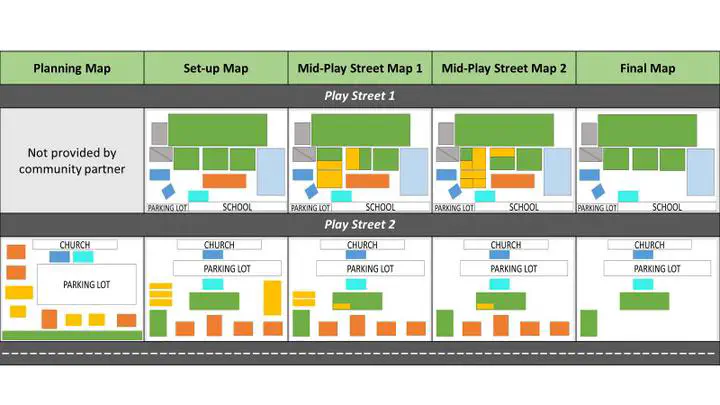Assessing physical activity in temporary spaces: Application of SOPARC / iSOPARC® for Play Streets

Abstract
Purpose: The System for Observing Play and Recreation in Communities (SOPARC) is a valid, reliable method for understanding how people engage in physical activity (PA) in various permanent settings (e.g., parks) and contexts. However, its utility, reliability, and validity in temporary spaces has not been examined. Temporary spaces can provide PA opportunities often absent in low income communities due to inadequate safe permanent PA spaces. Play Streets involve temporary closure of streets or other publicly accessibly spaces (e.g., parking lots, open-fields) to create safe play spaces for a specified time-period. We describe the utility, reliability, and validity of using SOPARC to assess PA in temporary spaces like Play Streets.
Method: Trained SOPARC/iSOPARC (iPad App) research staff completed systematic observations during Play Streets occurring in four diverse low-income rural U.S. communities during summer 2017.
Results: We successfully used iSOPARC to document PA and how spaces were used at Play Streets (n=16), confirming its utility, reliability, and validity. Unlike observations of permanent spaces, target areas could not be pre-established since play spaces often changed during set-up, requiring time onsite to identify target areas and boundaries. Play areas frequently appeared and/or disappeared during Play Streets, which was systematically addressed by using physical target area boundaries instead of activities.
Conclusions: Understanding how temporary spaces are used for PA is critical for promoting their use. SOPARC/iSOPARC methods are useful in a Play Streets’ context; however, systematic methods and training are needed to address inherent unpredictable and dynamic changes within and across target areas. Key Words: Methods, Systematic Observation, Physical Activity, SOPARC